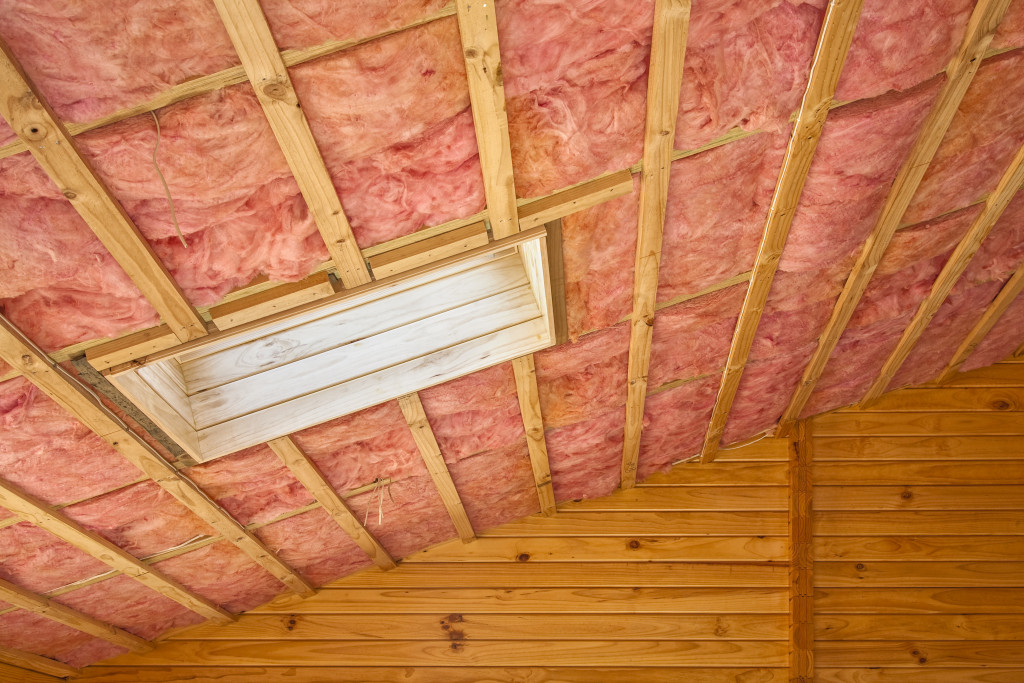People these days are devoting so much to the decorative phase of their homes. One of them is choosing the right paint to give their home a more personalized touch. Today, paint colors come in different types, finishes, and qualities. One of them is the acrylic render that provides complete protection for your exterior against rain, heat, and other outdoor forces.
Chances are, we’ve decorated our walls with wallpaper, paint, and artwork, but if there’s one surface we keep forgetting, it is the ceiling. The ceiling, or “the fifth wall,” as most designers call it, is finally getting the attention it needs.
For years, homeowners have put so much attention on their four walls that ceilings have become an afterthought. But thanks to home design bloggers and social influencers, statement walls are becoming a huge thing. In fact, the ceiling offers plenty of decorating opportunities for experimentation and creativity.
So, whether you need more natural light, fresher air, a feeling of spaciousness, or an added sophistication to your room, here are ways to spice up your home’s fifth wall.
Highlight the details
Rooms with architectural elements such as dormers, tray ceilings, and coffered ceilings are great places to paint or decorate.
Tray ceilings have inverted or recessed features with varying heights that draw the eyes upward, adding a feeling of spaciousness. A great tip is to incorporate a silver or gold leaf treatment to highlight the effect. But if it sounds too elaborate, consider glazing the ceiling in a darker or lighter shade than the base coat. If you need more light to flow throughout the room, use a high-gloss white for a glowing effect.
For dormers, use wallpaper or paint to highlight the unique molding instead of letting it fade in the background. Choose popping colors or playful patterns for that charming ambiance in the dining or living room. Pick large-scale patterns for greater visibility, especially if the ceiling is too high.
Another technique is to turn your boring fifth wall into coffered ceilings for a three-dimensional effect. Use framed beams to form square or octagon shapes in a grid pattern. This only applies to high ceilings because anything lesser than nine-foot is too overwhelming and feels claustrophobic.
Watch out for the prints

If maximalism is your thing, try using the same or different wallpapers or paints for the walls and ceilings. If you want to retain a sense of balance, consider quieter, tamed patterns.
For example, plain furniture and bedding go well with bright prints all over the walls. If the shams and coverlet are in neon colors, loud, bright prints may be a little distracting. For those who prefer wallpaper for the ceiling, go for large-scale motifs so that they’re easy on the eye.
One way to balance the pattern size is to examine the size of the room and your chosen patterns. For example, large prints on the ceiling will open up the room. Otherwise, smaller prints work best for recessed ceilings. So, the basic rule is to go for bigger patterns for spacious rooms and smaller ones for cramped spaces.
Achieve uniformity by complementing the pattern to the room’s function. Baby ducks are ideal for a nursery, while funny cartoons for the restroom will entertain your guests. When deciding about the right wallpaper pattern, think about how the occupants will use the room and how often they linger. This will give you an idea of how to decorate the walls and the ceiling.
Play with details
According to design experts, statement ceilings add personalization and dimension to both small and large rooms. Attaching designer features to the ceiling surface adds a special touch as long as it complements everything down there.
But if a feature ceiling feels over the top, hang some wall accents or add a few drops of paint on a white ceiling for a stunning middle ground. This works best for people who want to retain a neutral vibe.
Experiment by adding various shades from the same color to create interest and cohesion. Another option is to try subtle color blocking using the darker or lighter version of a similar hue. A bold option would be pale blue, navy, red, or pink for the ceiling.
When decorating a home, never forget about the fifth wall. Besides your four walls, the ceiling offers a great opportunity to spruce up your space and add depth to your interior. The trick is all about finding the right balance to complement everything that lies under it.

